Introduction
A Call for Leadership in Aging
Leaders in the Field of Aging Respond
Question: Negative perceptions about older adults are widespread. How do we attract leaders to improve health care for an aging America?
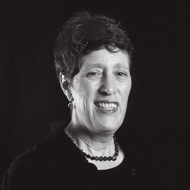 Nancy R. Hooyman, PhD, MSW
Nancy R. Hooyman, PhD, MSW
Endowed Gerontology Professor,
Dean Emeritus
School of Social Work
University of Washington
Seattle, WA
Recruiting students to careers in gerontological social work remains a significant challenge. Positive personal interactions with older adults are a critical factor in reducing students’ fear of the unknown often associated with aging and increasing their receptivity toward work with older people. When students have such structured opportunities, whether conducting oral histories or being engaged in service learning, their level of discomfort and anxiety about working with elders tends to dissipate.
Admissions and career counseling staff can influence students’ choice of concentrations, field placements, and careers. They must be equipped with resources to counter students who say, “I don’t want to work with old people.”
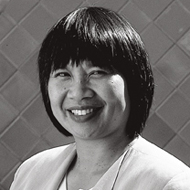
Jennie Chin Hansen, MS, RN
President, Board of Directors
AARP
Washington, DC
We need engaged, caring, intellectually curious, and tenacious individuals to shape the next generation of health care for older adults.
We need to identify those who have had early positive relationships with older adults, either through family interactions or caring for someone. Then, we need to select those who are motivated by a deep commitment to solve problems and who love complexity and challenge.
We need to design opportunities to collectively spend time with those of us who love and have felt blessed to do what we do on behalf of elders. We need to create time to socialize and converse on matters of aging, and provide exposure to clinicians, educators, researchers, system designers, and policy makers. Motivated professionals can then take on an issue with the guidance of one or more of these seasoned guides. This exposure and collaboration will produce a synergy of inspiration, creativity, and skill to build a new cadre of needed leaders.
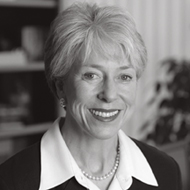
Christine K. Cassel, MD, MACP
President and CEO
American Board of Internal Medicine
Philadelphia, PA
Awareness of the challenges of an aging population is growing fast, and geriatric medicine ought to be able to jump on that wave. The success of “anti-aging” products and ventures demonstrates the openness of the boomer “Age Wave” to the realities of aging. But cosmetic interventions won’t solve the real problems facing older adults and their families, who need meaningful options for coordination of care, personalized medicine, and patient-centered engagement in decision making.
The current economic crisis and the ever more intense need for health care reform that focuses on affordability is the window of opportunity for geriatric expertise—especially for the challenge of Medicare in the 21st century. Geriatrics leaders need to step forward and offer a vision for both quality and affordability of health care. This is an unusual voice in the health care arena, and if it is compelling, it will be noticed.
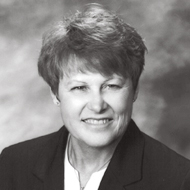
W. June Simmons, MSW
President and CEO
Partners in Care Foundation
San Fernando, CA
We attract the best and the brightest by being role models and engaging leaders of all ages. Talent has no age limit. Many of the up and coming leaders in the field of gerontology have come to the field through the personal experience of caring for an aging loved one. Some are just beginning their careers and others have come to it as an encore. Either way, we must ensure they have access to career pathways that promote the great meaning and personal satisfaction that comes from caring for others.
We must also communicate the nearly unlimited opportunity that exists in the field today. With an aging population, increased demand for services, and a health care system that is failing, the time for new leaders and new ideas is now. The opportunities to help shape the future of health care for our aging population has never been greater.
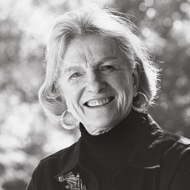
Claire M. Fagin, PhD, RN
Dean Emerita, Professor Emerita
School of Nursing
University of Pennsylvania
Philadelphia, PA
As a result of Hartford Foundation support for nursing education, more young nurses specializing in geriatrics are moving even earlier into faculty positions. They can be expected to be the leaders of the future in geriatric nursing education and practice. But negative perceptions about working with older adults linger, so we need to creatively recruit and prepare bright young nursing leaders and help them to develop the leadership skills that will strengthen them and inspire others.
Some people are blessed with natural leadership characteristics—charisma, quick thinking, and interpersonal skills. But teaching leadership skills must encompass the understanding that there are many ways to lead. Writing for publication, for example, may influence a larger audience than the most charismatic speaker. Leaders must give voice to issues. Individually and collectively, they must recognize and listen to diverse voices and try to bring them together as a cohesive force for change.
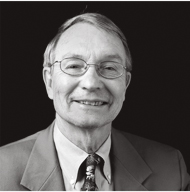
William J. Hall, MD
Professor of Medicine
University of Rochester
Director
The Center for Healthy Aging
Rochester, NY
We currently are attracting some of the best and brightest young physicians into geriatrics, thanks to the prescient and steadfast leadership of the Hartford Foundation. I am constantly impressed with the talent, dedication, and zeal of young trainees at meetings and at site visits compared to 20 years ago. The problem is that we have not yet attracted enough of them to move us to the “tipping point” where we can be truly transformational in changing the American health care system. The continuing involvement of the Foundation and other key stakeholders in training and leadership development is crucial in bringing to fruition that sort of quantum leap at this point in history when our country, and the burgeoning population of older adults, needs us.
